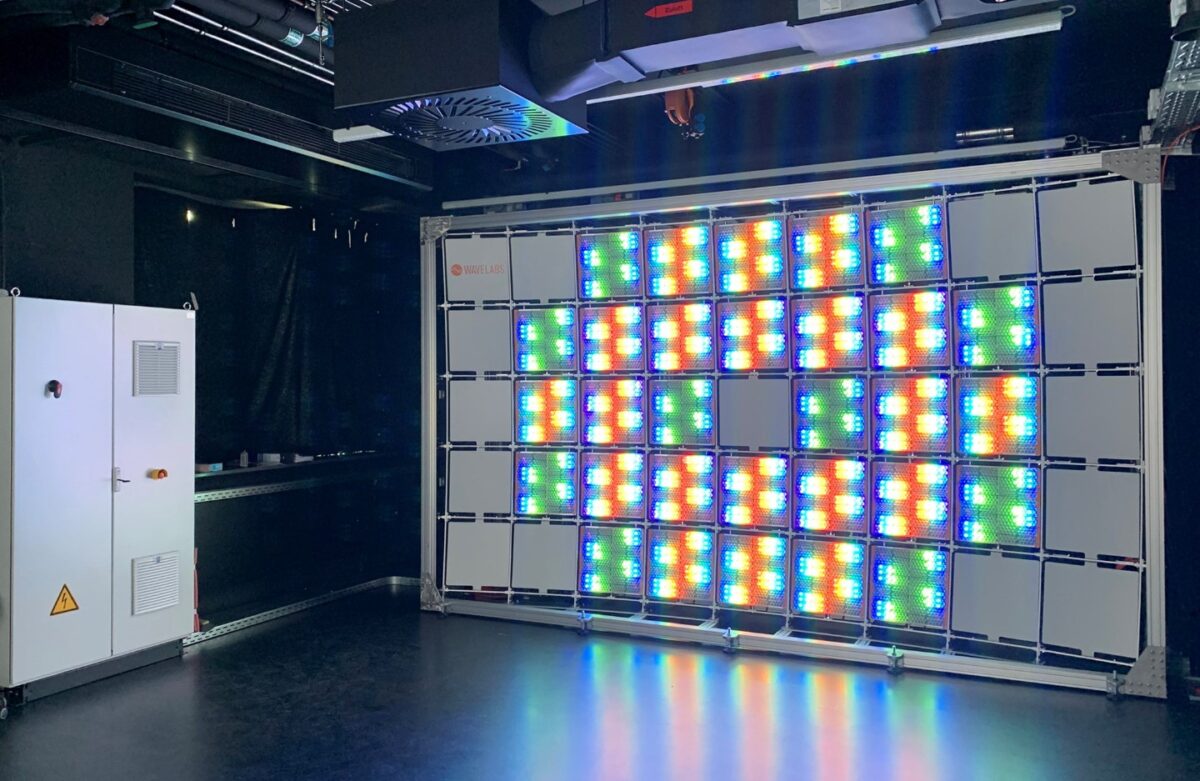A new project headed by the Fraunhofer Institute for Solar Energy Systems (Fraunhofer ISE) aims to develop ways to reliably measure perovskite-based tandem modules.
While preparations for the industrial production of highly efficient perovskite-silicon tandem solar cells and modules are already underway worldwide. Precisely measuring tandem solar cells and modules could help pave the way for their industrial implementation, according to Fraunhofer ISE.
Exact measurements are necessary to make objective comparisons between different cells and modules and to make technological improvements. In contrast to conventional silicon PV modules, however, the calibration is considerably more challenging.
Fraunhofer ISE is leading a research consortium in developing methods to better characterize perovskite-based tandem modules as part of the Katana project, funded by the German Federal Ministry for Economic Affairs and Climate. A solar simulator specially built for this purpose by Wavelabs Solar Metrology Systems is now operating at the institute's CalLab PV Modules.
“It is important to provide highly precise and reproducible measurements for this emerging technology as soon as possible so that there can be objective competition,” said Stefan Glunz, division director for photovoltaic technologies at Fraunhofer ISE.
Martin Schubert, project head at Fraunhofer ISE, said that all cell layers need to be irradiated by different light sources under conditions that closely imitate those under sunlight, in order to make reliable statements about the efficiency of the entire cell and module.
The new solar simulator makes this possible by measuring lab-scale perovskite-silicon PV cells with an area of 5 by 5 millimeters up to PV modules of 2.40 m by 1.30 m. The simulator's large wavelength range, spanning 320 to 1650 nanometers, is due to 28 different spectrally adjustable light channels distributed over 40 light sources with a total of 18,400 LEDs. This forms the basis for the test procedures developed by researchers for perovskite-silicon tandem technology. The solar simulator also enables the characterization of multi-junction solar cells and modules made of other materials.
“The new solar simulator is a milestone towards a standardized calibration procedure for perovskite-silicon tandem modules,” said Falko Griehl, project manager for the SINUS-3000 Advanced solar simulator at Wavelabs. “During its construction, we had to ensure that the LED illumination homogeneously irradiates the modules over the entire surface and that their light spectra can be adjusted so that all cell layers are realistically activated. With this technology, beyond the standard spectra, we can also simulate light at arbitrary times of day and regions, which allows this influence on tandem modules to be analyzed.”
From 2024, the heat generated by the longer illumination times during module characterization will be compensated by a climate chamber, in which the tandem PV cells and modules will be placed for measurement.
Perovskite solar cell manufacturer Oxford PV is an associate partner in the Katana project.
“The development of a new calibration capability for accurately determining the performance of perovskite-on-silicon cells and modules will enable high-quality independent measurements of this breakthrough technology,” said David Bushnell, Oxford PV’s test and measurement department manager. “We are pleased to be supporting the wider PV community by helping to fund this project.”
The classic flash simulators, or flasher, from silicon photovoltaics cannot be used for the characterization of perovskite-silicon tandem solar cells and modules since they cannot variably adjust the light spectrum that the tandem cells convert into electricity. In addition, the flasher's illumination time is too short to account for the effects between the sub-cells.
“For the metastable behavior of perovskite technology, the solar cells and modules must be tested under continuous light,” Fraunhofer ISE added, noting that until now, the efficiency of perovskite-based tandem modules had to be measured in complex and weather-dependent outdoor tests.
This content is protected by copyright and may not be reused. If you want to cooperate with us and would like to reuse some of our content, please contact: editors@pv-magazine.com.



4 comments
By submitting this form you agree to pv magazine using your data for the purposes of publishing your comment.
Your personal data will only be disclosed or otherwise transmitted to third parties for the purposes of spam filtering or if this is necessary for technical maintenance of the website. Any other transfer to third parties will not take place unless this is justified on the basis of applicable data protection regulations or if pv magazine is legally obliged to do so.
You may revoke this consent at any time with effect for the future, in which case your personal data will be deleted immediately. Otherwise, your data will be deleted if pv magazine has processed your request or the purpose of data storage is fulfilled.
Further information on data privacy can be found in our Data Protection Policy.